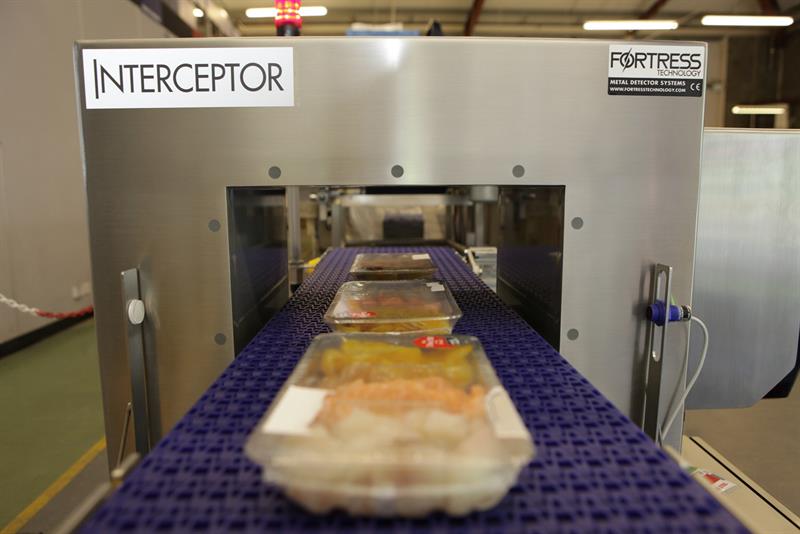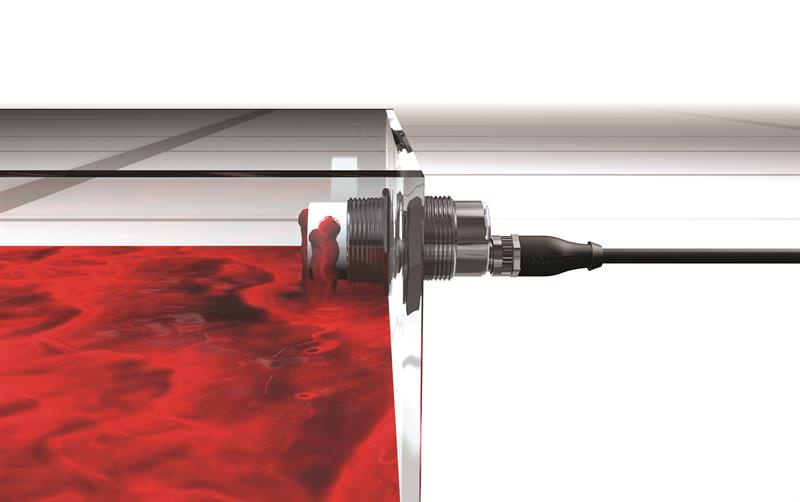Temperature is the physical variable most often measured in industrial processes. There are a variety of reasons we need to know the temperature of an object or a process – to prevent product damage, ensure sterilisation, determine biological health, ensure mixture blending, control chemical reactions (including food cooking), or to ensure drying, curing, and out-gassing, to name just a few. Temperature measurement can also be a regulatory requirement; for example in the temperature monitoring of food and drug products.
Selecting the sensor and measurement device to match a specific process is extremely important and knowing the various options is the first step in optimising temperature measurement. For example, temperature measurement sensors play an extremely important role in heat-treatment of metals, for example structural steel used in buildings and metals used in aircrafts. In these cases, a manufacturer must be able to guarantee that the metal was heat-treated in a particular way to ensure the metal has the desired properties. Another example is automobile parts; to be tough enough to withstand wear and tear certain surfaces on some parts must be heat-treated in accordance with a specific ASTM schedule. It is simply not possible to physically look at something (or even conduct X-ray fluorescence) to tell if it is properly heat-treated.
Temperature measurement sensor types
Sensors used in temperature measurement have an electrical property that is sensitive to temperature changes.
The temperature sensor chosen for a particular process depends on its cost, range of operation, sensitivity, response time, repeatability, and its ability to survive its environment. There is usually some measurement range overlap, and more than one sensor type may be suitable for an application. For example, biological systems can often be monitored with non-contact infrared (IR) detectors, thermistors, or silicon diodes.
Occasionally the only practical way to monitor an internal temperature is to embed a temperature sensor into a product during the manufacturing process. An example is an electric motor with an embedded resistive temperature detector (RTD), or a thermistor on one of the motor’s copper windings.
A thermistor is a type of resistor, generally made of ceramic or polymer, whose resistance varies significantly with temperature.Unfortunately, thermistors require more complicated software to account for their very non-linear temperature response.
RTDs use such metals as platinum or nickel. RTDs are useful over larger temperature range, while thermistors typically achieve a higher precision within a limited temperature range, typically -90 °C to 130 °C.
Application examples
Manufacturing plastic products often requires thermocouples due to the high operating temperatures of the machines that make the plastic parts. The sensors are very close to the electric heaters that extrude and form the finished products.
Excessive drying temperatures can cause damage and waste energy, which makes it desirable to control how products, objects, and even people, are dried. For example, streams of hot air drying human hair and hands must be controlled and limited to prevent injury. In the case of food preparation, insufficient drying can cause product damage or allow harmful bacteria to grow. Thermistors often monitor a product’s temperature directly or the atmosphere around the product.
The relative humidity of the atmosphere is an important variable related to drying. A thermistor in the humidity sensor of a chilled mirror hygrometer (CMH) helps measure the dew point, which is related to the moisture content of the nearby atmosphere.
Monitoring outside weather and inside temperatures in heating, ventilating, air conditioning (HVAC) equipment often calls for use of thermistors, RTDs, or silicone diodes, which are low cost, can withstand their environment, and are sensitive to temperature changes. Among these, thermistors have the highest sensitivity. Thermistors are often found in home thermostats because of their high sensitivity and low cost.
Refrigeration systems often use thermocouples due to their ruggedness and low cost. The T-type thermocouple is commonly used because it resists corrosion from moisture better than other thermocouple types, including type K, and J. It is not unusual for there to be moisture condensation on refrigerated surfaces. The T-type has the lowest temperature calibration data of any thermocouple, with data down to -185ºC.
The lowest end of the temperature scale is used by researchers to study material properties close to absolute zero, -273.15º C.Sensors in these devices use the dependence of the forward voltage drop in a p-n junction diode biased at a constant current, typically 10 µA. Some germanium and silicon diodes can get to within fractions of zero degrees Kelvin.
Designing a food production line? Fortress Technology is claiming to have made a breakthrough in food safety inspection. Increasing stainless steel detection by 100% compared to the most recent generations of metal detectors, the Interceptor accurately inspects wet and conductive products and aims to eliminate false rejects. Specifically designed to tackle the longstanding challenge of high product rejects when using metal detectors to inspect meat, dairy, ready meals, bakery and fortified cereals applications, Fortress’s latest technology splits the frequency signals. This means that the machine can clearly differentiate between the signal generated by the product as a result of moisture or mineral content and any metal contaminant, putting a stop to a potential stainless steel signal being ‘swamped’ by product effect. |
Measuring with thermocouples
A thermocouple is a sensor for measuring temperature that consists of two electrical conductors made from different metal alloys. Typically, the two conductors are built into a cable that has a heat-resistant outer sheath. At one end of the cable, the two conductors are mechanically and electrically connected together by crimping, welding, or other means. This end of the thermocouple (known as the hot junction) is placed at the location that is to be monitored. The other end of the thermocouple (the cold or reference junction) is connected to a thermocouple measurement system. The term ‘hot’ junction is somewhat of a misnomer, since this junction will be subjected to a temperature below that of the reference junction if relatively cold temperatures are being measured.
Thermocouples generate an open-circuit voltage proportional to the temperature difference between the hot and reference junctions.
It is important to have an accurate cold junction measurement, even when several thermocouples are connected to the same board. If the cold junction sensor is too far away from the thermocouple, there may be a significant measurement error – more than 1º C. To avoid such errors, some measurement systems use eight cold junction sensors to ensure each thermocouple is less than ½-inch from a cold junction sensor.
It is not unusual to attach the hot end of a thermocouple sensor next to an electrical heater or to the machine frame used by high voltage motors. These two conditions often lead to high voltages finding their way onto thermocouple sensors. Thermal cycling of electrical heaters often weakens their electrical insulation, resulting in a high common mode voltage being applied to the millivolt-level thermocouple signal. This condition obscures the temperature signal and in the worst case destroys the measurement electronics. One solution is to isolate the electronics and let them float up to the high common mode voltage of the thermocouple.
Liquids such as ketchup, mayonnaise and mustard can be a problem for level sensorsas they have a tendency to be adhesive or create extensive amounts of material build-up on the sensors or container walls, other products such as milk can foam during processing. Both these effects can cause standard capacitive sensors to false trigger. Balluff’s SMARTLEVEL sensors combat these problems. The SMARTLEVEL 500+ a stainless steel M30 sensor with a non-flush Teflon sensing surface, reliably detects difficult liquids through plastic or glass containers (up to 20mm thick), or by direct contact with the liquid. Balluff’s SMARTLEVEL 500+ can also detect high-conductive acids such as sulphuric or hydrochloric and concentrated cleaning agents, again even through container walls. |
Precise industry considerations
Sensors must be chosen to survive their environment and produce repeatable results after repeated exposure to temperature extremes. Thermocouples and RTDs can survive high temperatures but sacrifice resolution; they need more complex circuitry, for example, cold junction measurement (for thermocouples) and a four-wire measurement (for RTDs). The millivolt-level signal from thermocouples limits high resolution measurements in noisy industrial environments.
Malfunctioning machinery can add high common mode voltages that obscure the tiny sensor signals and they can destroy measurement circuitry. Isolated measurement circuitry minimises the effects of high common mode voltages while resisting high voltage damage.
Some applications require resolutions of 0.001ºC. Thermistors provide this resolution at the expense of a limited temperature range; however, unlike thermocouples and RTDs they cannot survive high temperature environments. Thermistors have the fastest time response to temperature changes. They have the added advantage of being inexpensive and not requiring an additional cold junction measurement.
The reversed biased silicon diode is the least expensive sensor. It has a well-defined voltage versus temperature curve, but does not have the thermistors’ high sensitivity – nor can it survive the high temperature environments where thermocouples excel. The reversed biased diode is sometimes built into integrated circuits designed for temperature measurement. The added circuitry makes the diode’s non-linearity appear linear.
Author profile:
Bill Tanner is president of Sensoray Company.


 Minute metal detection
Minute metal detection Keen on mustard
Keen on mustard


